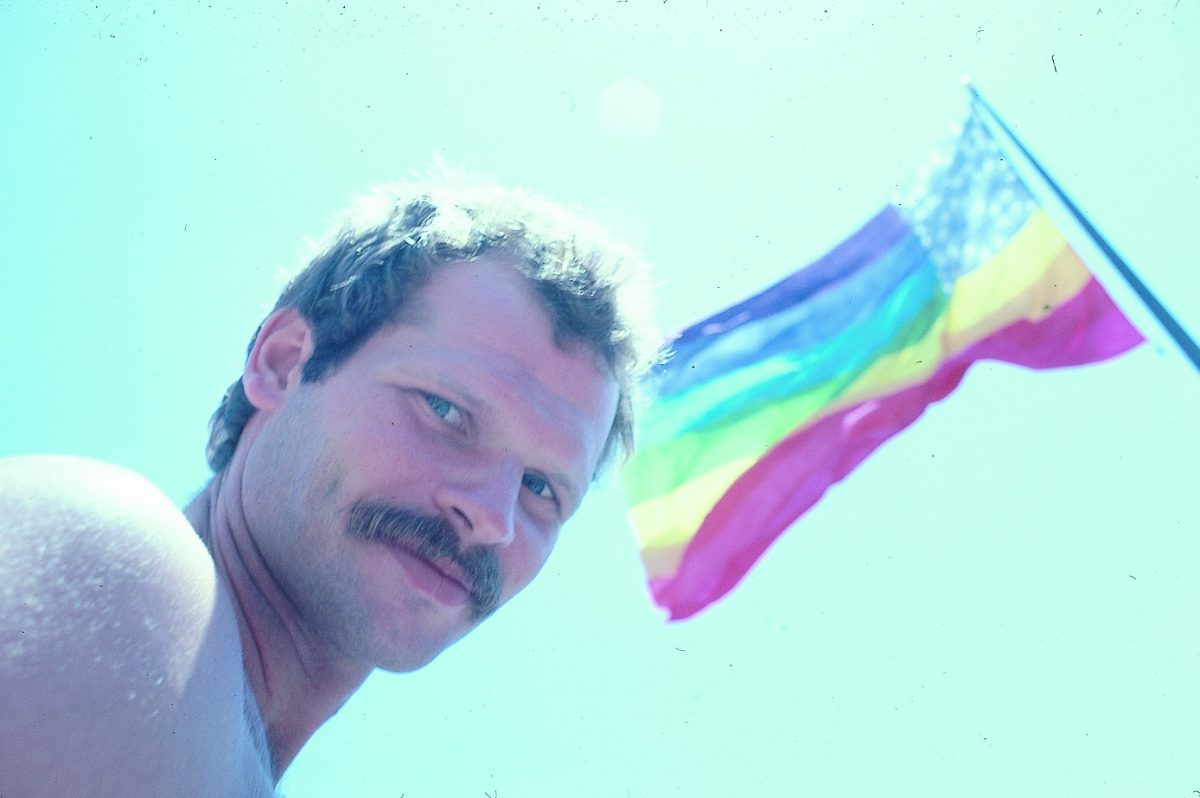

The first Rainbow Flag, adopted by the LGBTQ community as a symbol of pride and solidarity, was raised on June 25, 1978, at the San Francisco Gay Freedom Day Parade. It was created by Gilbert Baker, an artist and queer activist, who described his rainbow-striped design as “something beautiful, something from us … it really fits our diversity in terms of race, gender, ages, all of those things.” That day, two pride banners replaced the United States and United Nations flags hoisted at the United Nations Plaza.
The flags constitute a priceless piece of queer history, but until now, they were both presumed lost. This April, a 10-by-28 feet-long segment of one of Baker’s authentic pride flags entered the collection of the GLBT Historical Society in San Francisco, where it was unveiled last week as part of the ongoing exhibition Performance, Protest and Politics: The Art of Gilbert Baker.

The two flags flown during the 1978 parade were badly mildewed and damaged during storage at the San Francisco Gay Community Center in the years that followed, but Baker secretly managed to salvage a scrap of one of them. When the artist died in 2017, the historic piece of fabric landed in the hands of his sister Ardonna Cook, who loaned it to the Gilbert Baker Foundation two years later for the June 2019 Stonewall 50 Pride Parade in New York City. At that time, the Foundation was in the dark about the banner’s fascinating origins.

After the 2019 event, the fragment of the flag was folded and kept in the Manhattan home of Charley Beal, the foundation’s director. That summer, Beal was coincidentally contacted by James Ferrigan, an expert vexillologist — or flag historian — and one of Beal’s collaborators in the 1970s who was on the hunt for the long-lost segment. Upon hearing Ferrigan’s description of the fabric scrap, Beal realized it was the very same banner that was sitting in storage in his home.
Following authentication, the iconic relic was donated to the GLBT Historical Society, a public museum and archive focused on promoting a deeper understanding of LGBTQ history, culture, and arts.

“People are moved to tears because of how important and significant that first flag-flying in 1978 was to them,” the museum’s executive director, Terry Beswick, told the Guardian.
Unlike the mostly six-color Rainbow Flags seen today, Baker’s original design featured eight stripes with a pink strip at the top — a nod to the inverted pink triangle, a badge enforced by Nazi Germany during its persecution of gay men that has been reclaimed by the LGBTQ community. The last few years have seen a wave of new LGBTQ banners: in 2017, the city of Philadelphia introduced its own “Philly Pride Flag,” which incorporates black and brown stripes to represent the Black and Latin communities. Others flaunt the baby pink and blue colors of the Trans Pridge Flag, which subverts the traditional hues associated with gender as assigned at birth.
Beswick notes that Baker deliberately chose not to trademark his creation and “died a pauper, despite the fact that millions and millions of dollars have been made using the rainbow as an LGBTQ+ symbol.”
“Gilbert not only created a symbol of our movement, but that creation has actually pushed our movement forward,” Beswick said.
0 Commentaires